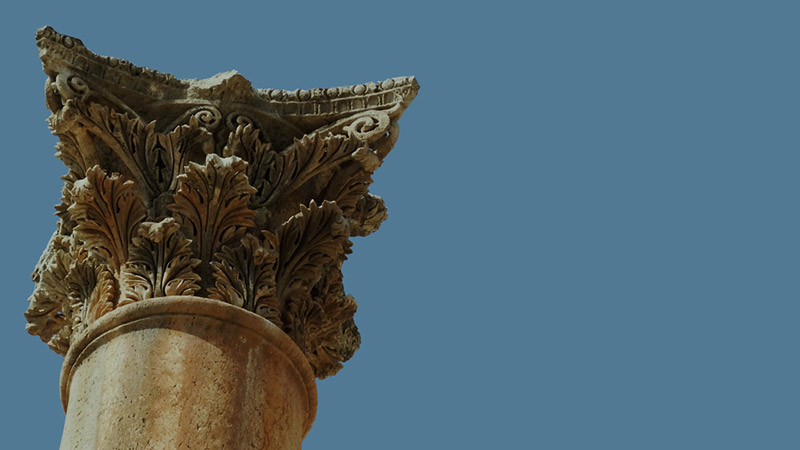More Results
Showing 12 of 315
Encyclopedia

Roman Columns at Beth Shean
Huge marble columns lie where they fell when an earthquake devastated Beth Shean in AD 749. Note the depth of soil that has covered the remains of the last major settlement on this site.
MORE
Roman Statue
The second commandment forbade making images. Hellenistic culture glorified the human form. These two world views clashed in the days of Herod as he tried (and largely succeeded) to mold his kingdom into a Hellenistic one. He imported great number...
MORE
Ruins of Capernaum
This aerial view shows the remains of Capernaum, a small village on the northern shore of the Sea of Galilee ("Capernaum" comes from the Hebrew Kfar Nahum, which means "Nahum's Village"). Jesus chose this place as the hub of hi...
MORE
Sacrifices
Temple Sacrifices The people of ancient Israel made sacrifices to God in the temple. These sacrifices, which involved the shedding of blood (the pouring out of the animal's life), symbolized the atonement made for the people's sins.According to Go...
MORE
Sardis Definition
- Sardis stood in the middle of the Hermus River Valley, just over fifty miles east of the Mediterranean Sea in what is now the country of Turkey. The main east-west trade route came through this valley.- On a spur of Mount Tmolus, on the north si...
MORE
Scenes from Caesarea Philippi: Living Water
This stream is one of several that run out of the cliff at Caesarea Philippi. Originally, the springs ran from the cave known as the Grotto of Pan. The presence of a religious cult here is probably due to these springs of fresh water.Peter's confe...
MORE
Scenes from Caesarea Philippi: Niches
These niches originally held statues of the pagan gods worshipped at Caesarea Philippi. The largest is actually an artificial cave that leads to a niche in the cliff itself. This niche apparently held a statue of Pan. Above it is another niche wit...
MORE
Scenes from Caesarea Philippi: The Grotto of Pan
Against the cliff and in the large cave on the left, in the third century BC, was a cult center to the fertility god Pan. This center probably was built to compete with the high place at Dan, about three miles away.The presence of the spring formi...
MORE
Scenes from Caesarea Phillipi: Temple Podium
The reconstructed platform, or podium, near the cave at Caesarea Philippi was originally the base of a temple either to the Roman emperor Augustus or to Pan (or possibly both). The entrance to the Grotto (or cave) of Pan is seen to the left of the...
MORE
Scenes from En Gedi
En Gedi is the home of desert goats known as ibex. These heavy- horned males and graceful does graze on the sparse grasses in the surrounding desert. The only available water for miles around is the spring of En Gedi. This photograph doesn?t exact...
MORE
Scenes from En Gedi-Living Water Brings Life
The result living water is clearly seen. The barren wilderness on the background contrasts sharply with the lush growth produced by the water. The sudden appearance of water brings like out of the barrenness of the desert.Many Bible passages descr...
MORE
Scripture Word Pictures
The early writers and readers of the Scriptures viewed their world in concrete, rather than abstract, terms. Because of this, they used word pictures and symbolic actions rather than formal definitions to describe God and his relationship with his...
MORE

















